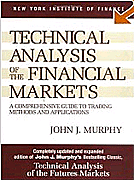Derivatives grow explosively, BIS reports
It's been four years since Warren Buffett warned that the global financial system was held hostage to ticking "time bombs" and at risk of a "megacatastrophe".
He was of course talking about financial derivatives, i.e. the options, swaps, forwards and more-exotic investment tools that have blossomed into a $400 (plus)-trillion global market. He warned they had created a "daisy chain risk" that one Long Term Capital Management-style pratfall would topple the whole global house of cards.
Well, here's a related "ominous" newsitem.
-------------------------------
By Hamish Risk
Bloomberg News Service
Monday, May 21, 2007
LONDON -- The global derivatives market grew at the fastest pace in at least nine years during 2006 as the amount of contracts based on bonds more than doubled to $29 trillion, the Bank for International Settlements said today.
Derivatives covering bonds and loans rose by $15 trillion last year, the Basel, Switzerland-based bank said on its Web site. The total amount of over-the-counter contracts whose value is derived from price changes of bonds, currencies, commodities, and stocks, or events like interest rates or the weather rose 39.5 percent to $415 trillion, the biggest jump since the BIS began compiling the data.
Morgan Stanley, Bear Stearns Cos. and Deutsche Bank AG depended on credit derivatives to report first-quarter profits that beat analyst forecasts. Federal Reserve Chairman Ben S. Bernanke said last week that the contracts "increased the resilience" of financial markets, while warning that they may be exploited by investors to profit from insider trading.
"Derivatives are now a major contributor to investment bank earnings," said Jerry Del Missier, co-president of Barclays Capital in London, the biggest underwriter of European bonds last year. "Credit derivatives will continue their high growth path for a long time yet, and that growth rate will be higher than any other market."
The actual money at risk through credit derivatives increased 93 percent to $470 billion last year, the BIS said. The amount at stake in the entire derivatives market is $9.7 trillion, according to the BIS, which was formed in 1930 to monitor financial markets and regulate banks.
The market, started by Salomon Brothers Inc. in 1981 when the firm arranged for International Business Machines Corp. and the World Bank to swap debt payments in Swiss francs and German marks for dollar obligations, has become Wall Street's most- profitable activity.
Morgan Stanley, the world's second-biggest securities firm by market value, said a jump in revenue from credit products helped spur a 70 percent increase in first-quarter profit to an all-time high. Bear Stearns, the fifth-biggest U.S. securities firm, said credit derivatives trading contributed to an 8 percent increase in first-quarter profit. Deutsche Bank reported record revenue from trading debt and credit derivatives, helping lift first-quarter profit by 30 percent.
Contracts on bonds took off in the 1990s when New York-based JPMorgan Chase & Co. led banks creating credit-default swaps. The contracts allow bond investors to hedge against the risk of a company or country defaulting on interest payments or speculate on its creditworthiness.
Derivatives helped investors hedge their risks and contained a decline in bond prices during 2005 when the credit ratings on debt of Ford Motor Co. in Dearborn, Michigan, and Detroit-based General Motors Corp. was reduced to below investment grade.
The contracts also limited the fallout from Greenwich, Connecticut-based Amaranth Advisors LLC's record $6.6-billion loss last year and this year's slump in the U.S. subprime mortgage market, said Anshu Jain, head of global markets at Deutsche Bank in London.
"We have been through several market corrections in the past few years and in each case, markets have recovered," Jain said in an e-mail. "In retrospect, people think the market has been characterized by calm, continuous, and even benign conditions. Derivatives are a big part of explaining that phenomenon."
In a separate report, a group of central bankers, finance ministries, and financial regulators known as the Financial Stability Forum called on hedge funds to improve risk management to prevent shocks to the financial system. The group's secretariat is based at the BIS.
The forum's report, dated May 19, said there has been "some erosion in counterparty discipline recently," citing the competition among banks for hedge fund business. The world's more than 9,000 hedge funds move money in and out of markets faster and in larger quantities than mainstream funds, raising concerns about the stability of global markets.
Banks and hedge funds say it's cheaper and easier to use credit-default swaps than buying or selling the underlying securities. Investors who buy the contracts are paid the face value of the underlying debt in exchange for the defaulted notes should the company fail to adhere to debt agreements.
Interest-rate swaps remain the biggest part of the derivatives market, growing 15 percent to $292 trillion, compared with 38-percent growth the previous year, the report said. The contracts allow companies to switch between fixed-rate and floating-rate interest payments.
Growth in the overall derivatives market outpaced the previous record increase of 39.2 percent in 2003.
Foreign-exchange derivatives rose 28 percent to $40.2 billion in 2006. Contracts based on commodities such as gold and oil expanded by 27.7 percent to $6.9 trillion.
The BIS surveyed 62 institutions for its semi-annual report.
* * *
He was of course talking about financial derivatives, i.e. the options, swaps, forwards and more-exotic investment tools that have blossomed into a $400 (plus)-trillion global market. He warned they had created a "daisy chain risk" that one Long Term Capital Management-style pratfall would topple the whole global house of cards.
Well, here's a related "ominous" newsitem.
-------------------------------
Credit Default Swaps Spur Fastest Derivatives Growth
By Hamish Risk
Bloomberg News Service
Monday, May 21, 2007
LONDON -- The global derivatives market grew at the fastest pace in at least nine years during 2006 as the amount of contracts based on bonds more than doubled to $29 trillion, the Bank for International Settlements said today.
Derivatives covering bonds and loans rose by $15 trillion last year, the Basel, Switzerland-based bank said on its Web site. The total amount of over-the-counter contracts whose value is derived from price changes of bonds, currencies, commodities, and stocks, or events like interest rates or the weather rose 39.5 percent to $415 trillion, the biggest jump since the BIS began compiling the data.
Morgan Stanley, Bear Stearns Cos. and Deutsche Bank AG depended on credit derivatives to report first-quarter profits that beat analyst forecasts. Federal Reserve Chairman Ben S. Bernanke said last week that the contracts "increased the resilience" of financial markets, while warning that they may be exploited by investors to profit from insider trading.
"Derivatives are now a major contributor to investment bank earnings," said Jerry Del Missier, co-president of Barclays Capital in London, the biggest underwriter of European bonds last year. "Credit derivatives will continue their high growth path for a long time yet, and that growth rate will be higher than any other market."
The actual money at risk through credit derivatives increased 93 percent to $470 billion last year, the BIS said. The amount at stake in the entire derivatives market is $9.7 trillion, according to the BIS, which was formed in 1930 to monitor financial markets and regulate banks.
The market, started by Salomon Brothers Inc. in 1981 when the firm arranged for International Business Machines Corp. and the World Bank to swap debt payments in Swiss francs and German marks for dollar obligations, has become Wall Street's most- profitable activity.
Morgan Stanley, the world's second-biggest securities firm by market value, said a jump in revenue from credit products helped spur a 70 percent increase in first-quarter profit to an all-time high. Bear Stearns, the fifth-biggest U.S. securities firm, said credit derivatives trading contributed to an 8 percent increase in first-quarter profit. Deutsche Bank reported record revenue from trading debt and credit derivatives, helping lift first-quarter profit by 30 percent.
Contracts on bonds took off in the 1990s when New York-based JPMorgan Chase & Co. led banks creating credit-default swaps. The contracts allow bond investors to hedge against the risk of a company or country defaulting on interest payments or speculate on its creditworthiness.
Derivatives helped investors hedge their risks and contained a decline in bond prices during 2005 when the credit ratings on debt of Ford Motor Co. in Dearborn, Michigan, and Detroit-based General Motors Corp. was reduced to below investment grade.
The contracts also limited the fallout from Greenwich, Connecticut-based Amaranth Advisors LLC's record $6.6-billion loss last year and this year's slump in the U.S. subprime mortgage market, said Anshu Jain, head of global markets at Deutsche Bank in London.
"We have been through several market corrections in the past few years and in each case, markets have recovered," Jain said in an e-mail. "In retrospect, people think the market has been characterized by calm, continuous, and even benign conditions. Derivatives are a big part of explaining that phenomenon."
In a separate report, a group of central bankers, finance ministries, and financial regulators known as the Financial Stability Forum called on hedge funds to improve risk management to prevent shocks to the financial system. The group's secretariat is based at the BIS.
The forum's report, dated May 19, said there has been "some erosion in counterparty discipline recently," citing the competition among banks for hedge fund business. The world's more than 9,000 hedge funds move money in and out of markets faster and in larger quantities than mainstream funds, raising concerns about the stability of global markets.
Banks and hedge funds say it's cheaper and easier to use credit-default swaps than buying or selling the underlying securities. Investors who buy the contracts are paid the face value of the underlying debt in exchange for the defaulted notes should the company fail to adhere to debt agreements.
Interest-rate swaps remain the biggest part of the derivatives market, growing 15 percent to $292 trillion, compared with 38-percent growth the previous year, the report said. The contracts allow companies to switch between fixed-rate and floating-rate interest payments.
Growth in the overall derivatives market outpaced the previous record increase of 39.2 percent in 2003.
Foreign-exchange derivatives rose 28 percent to $40.2 billion in 2006. Contracts based on commodities such as gold and oil expanded by 27.7 percent to $6.9 trillion.
The BIS surveyed 62 institutions for its semi-annual report.
* * *
Labels: financial crisis, money















![[Most Recent Quotes from www.kitco.com] [Most Recent Quotes from www.kitco.com]](http://www.kitco.com/images/live/t24_au_en_usoz_6.gif)
![[Most Recent Quotes from www.kitco.com] [Most Recent Quotes from www.kitco.com]](http://www.kitco.com/images/live/au_go_0030_ny.gif)
![[Most Recent Quotes from www.kitco.com] [Most Recent Quotes from www.kitco.com]](http://www.kitco.com/images/live/au_go_0365_ny.gif)
![[Most Recent Quotes from www.kitco.com] [Most Recent Quotes from www.kitco.com]](http://kitconet.com/charts/metals/silver/t24_ag_en_usoz_4.gif)

















0 ΣΧΟΛΙΑ (COMMENTS):
Post a Comment
<< Home